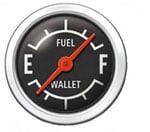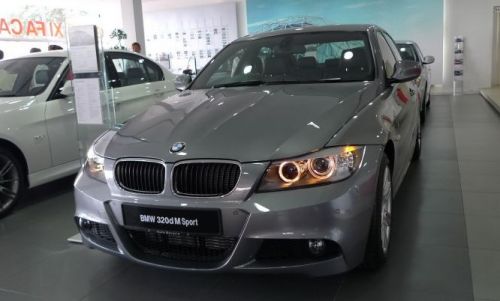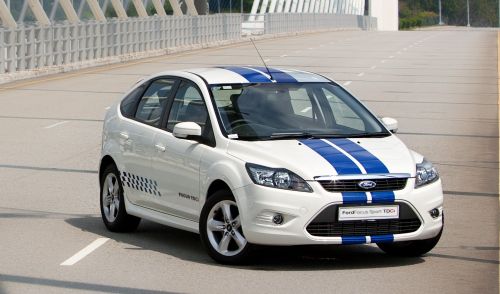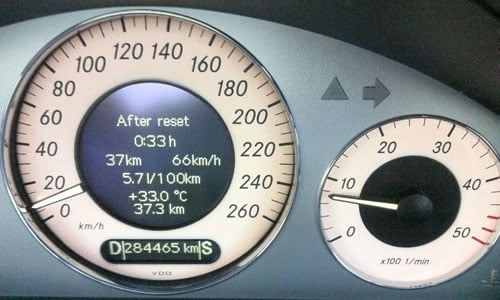 Platts has some interesting information on what’s happening with the proposed implementation of Euro 4M fuel standards for both petrol and diesel in Malaysia.
Platts has some interesting information on what’s happening with the proposed implementation of Euro 4M fuel standards for both petrol and diesel in Malaysia.
Last we heard, Euro 4M was supposed to be implemented this year, but in reality the phrase “implemented” doesn’t necessarily mean we’re going to be fueling our 320d and Focus TDCI at the pump with much cleaner diesel this year.
According to a Platts newspiece last week quoting a Malaysian government official, a draft proposal for Euro 4M compliant petrol and diesel is expected to be ready for cabinet approval by Q2 2011, following a discussion in November last year on what exactly Euro 4M specifications should be.
You may be wondering what the M in Euro 4M or even the current Euro 2M standards mean. There’s no official definition that I can find on what exactly the letter M stands for but what we know for sure is that Euro 2M and Euro 4M are localized versions of the Euro 2 and Euro 4 specifications. The specifications are definitely not 100% the same. I’m sure all of us are wondering what this implies.

You see the 320d everywhere these days – BMW has done well with diesel advocacy
Sometime last year, we attended a technical briefing by Caltex on their Techron fuel and a Chevron Senior Product Engineering Specialist was there – Mr Greg Engeler. According to Mr Engeler, every country in this region with the exception of Hong Kong has modified the specifications of the Euro spec fuel they are selling in their countries.
Malaysian climate, temperature and environment is different from Europe, so if Euro specifications are followed to the dot, it would be a waste of money refining the fuel to those specs. Instead, what the policymakers have done here in consultation with the fuel companies is pick and choose certain ‘enablers’ from the full Euro specs, such as sulphur content. According to Mr Engeler, it made sense for Hong Kong to just use Euro spec fuel as they do not have any refineries. This fact has helped Hong Kong be the first country in Asia to introduce ultra low sulphur diesel with 50ppm of sulphur content back in 2000.
But still, the Platts story has some other facts – allegedly the oil industry has proposed a 3.5% limit (down from the current 5%) for benzene content in petrol for the new standard, despite Euro specs calling for 1% benzene content since Euro 3. It seems that refining petrol down to 1% maximum benzene content is too costly. Benzene is also an anti-knock agent and it would be easier for the oil companies to engineer the petrol to have a good octane rating with the help of more benzene content instead of other methods and ingredients.

The Euro 2M diesel has brought awesome cars like the Ford Focus TDCI into Malaysia!
The Platts report also alleges that the proposed Euro 4M standards are silent on other specs such as aromatics and olefins for petrol and cetane number for diesel. Apparently the Euro 4M standard was proposed by Malaysia’s Department of Environment under the Ministry of Natural Resources and Environment, and defining those figures fall outside the jurisdiction of the department. Who sets the remaining specifications?
But this may not be a cause for concern at all as the same story says the government intends 100% for Euro 4M to approach a similar quality to Euro 4 fuels. The all important “sulphur content” enabler in the proposed Euro 4M standards has been specified to be 50ppm in both petrol and diesel, which is in line with Euro 4 standards. The current Euro 2M standards call for 500ppm, the same as Euro 2. Euro 5 has brought the limit even lower to 10ppm.
If and when Euro 4M is officially announced possibly by the end of this year, the oil companies will be given a 5 year grace period to implement the new fuel at the pumps, as apparently they can only start work on the refineries once the government has announced something solid. If this is the case, who knows when the first Euro 4M fuels will appear at the pump. It could take up to until 2012/2013 or up to 2016, worst case scenario!
Something else that we – or rather diesel vehicle owners – will have to watch out for is the introduction of B5 biodiesel mix at the pumps. B5 is essentially 95% regular diesel and 5% palm oil biodiesel. Last we heard from Caltex, the date for this implementation is June 2011. According to Caltex’s Mr Engeler, all diesel engines should theoretically be able to run B5 without issues. It’s only the higher biodiesel mixes which need reengineering.

Fuel economy such as this is no drama for turbodiesels even in a large sedan like a Merc E-Class – with the introduction of better diesel, hopefully more Malaysians will embrace cars like the Ford Focus TDCI and the BMW 320d/520d/730Ld
Biodiesel also tends to wax and thicken in cold climates but none of that is a problem in Malaysia. He did say that in reality, B0 (pure diesel) produces less NOX emissions compared to B5 although other types of emissions are typically lower, and B5 also tends to foam more. B5 also technically has less energy content compared to pure diesel but I don’t think the difference is one that is very noticeable.
In Malaysia, Sime Darby plantation have already started using their own blend of biodiesel called Bio-N (pronounced “Beyond”) in their upstream operation vehicles since March 2008. Bio-N started off as B5 but in some locations, Sime Darby are using blends of up to B10, which uses 10% palm biodiesel. In total, Sime Darby uses about 100 metric tons of pure biodiesel every year to blend with regular diesel into Bio-N for its upstream vehicles.
If you look after the jump, you’ll find an embedded PDF document released by the government of Australia on its position on biodiesel blends such as B5 up to even B20, which is generally the accepted limit before diesel engines and fuel systems start to get wonky. It’s a very good read.
Looking to sell your car? Sell it with Carro.











AI-generated Summary ✨
Comments express anticipation and support for Malaysia's upcoming Euro 4M petrol and diesel standards, with expectations of improved fuel quality and environmental benefits. Some are curious about the actual implementation process, pricing effects, and the compatibility with current and future engines. There is concern about whether existing vehicles, especially diesel engines, can run on biodiesel and whether fuel prices will rise accordingly. Many comments highlight that Malaysia has been lagging behind Europe and other countries adopting Euro 4 standards, and some note that the industry might resist change due to cost or infrastructure issues. Overall, the sentiment is optimistic, hoping for timely implementation, better fuel standards, and economic advantages, despite skepticism about the pace and potential costs.